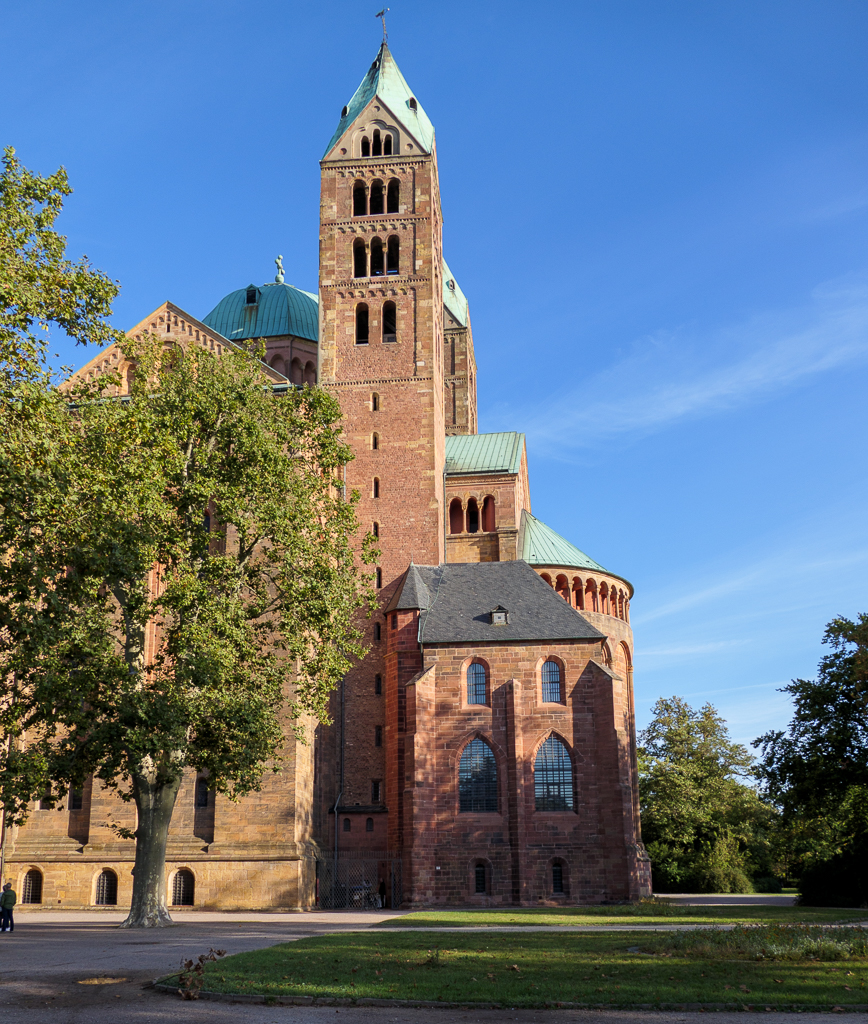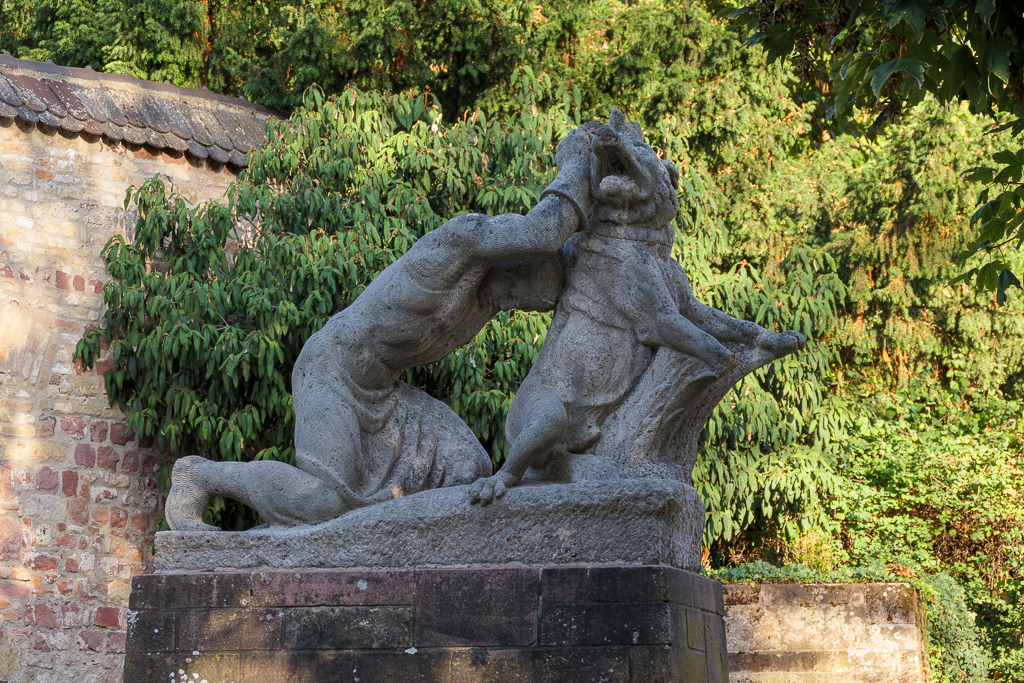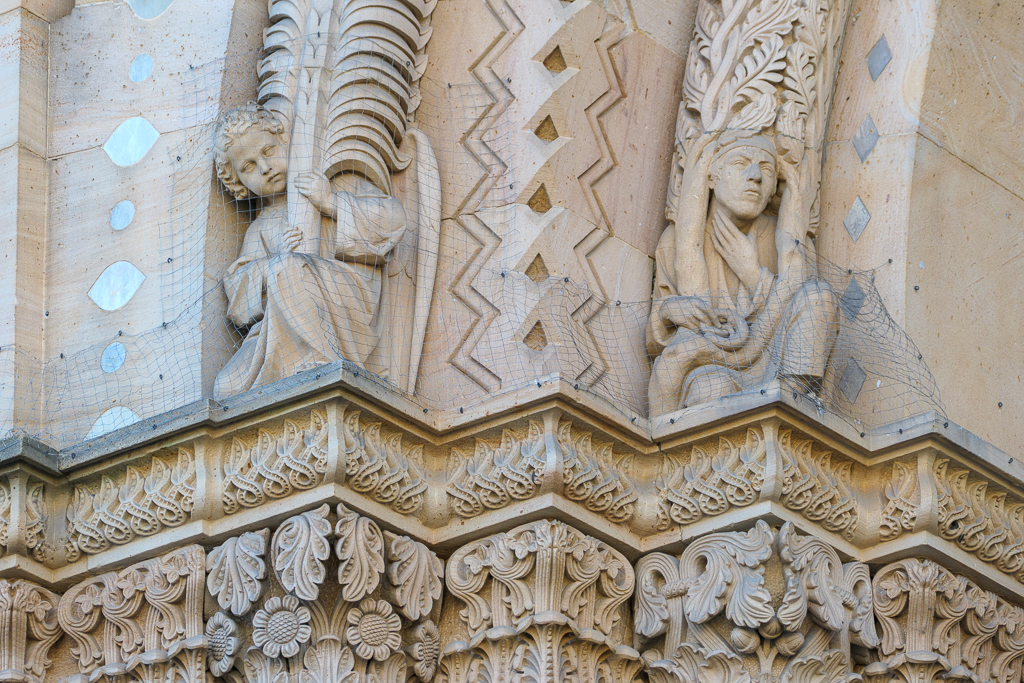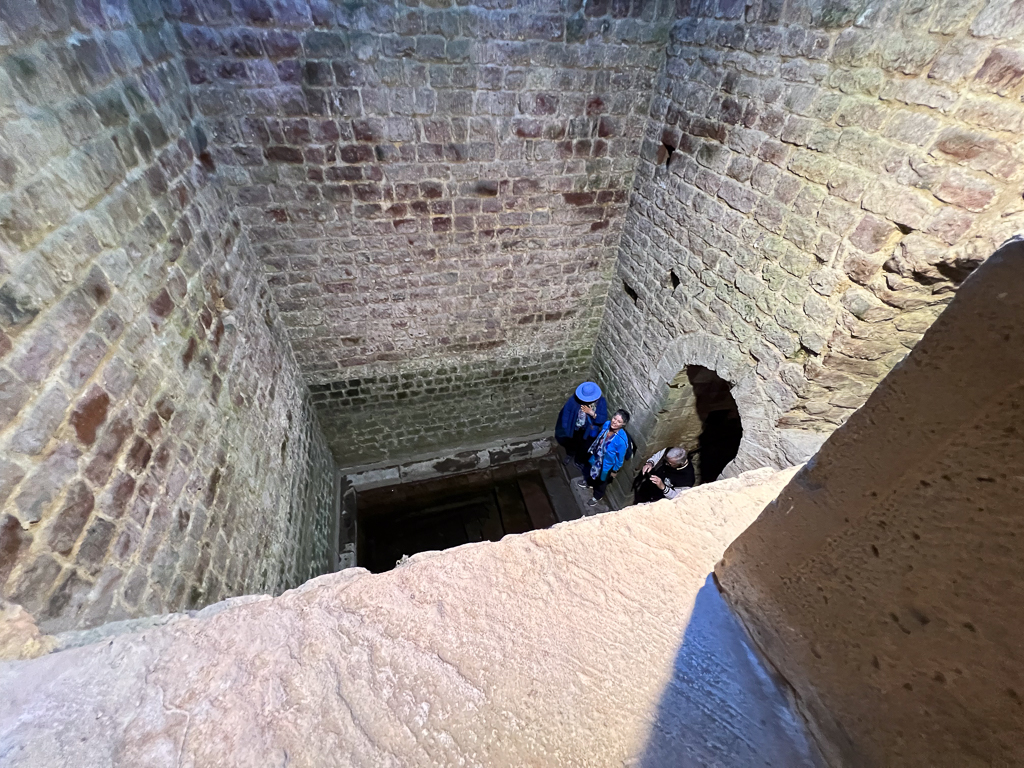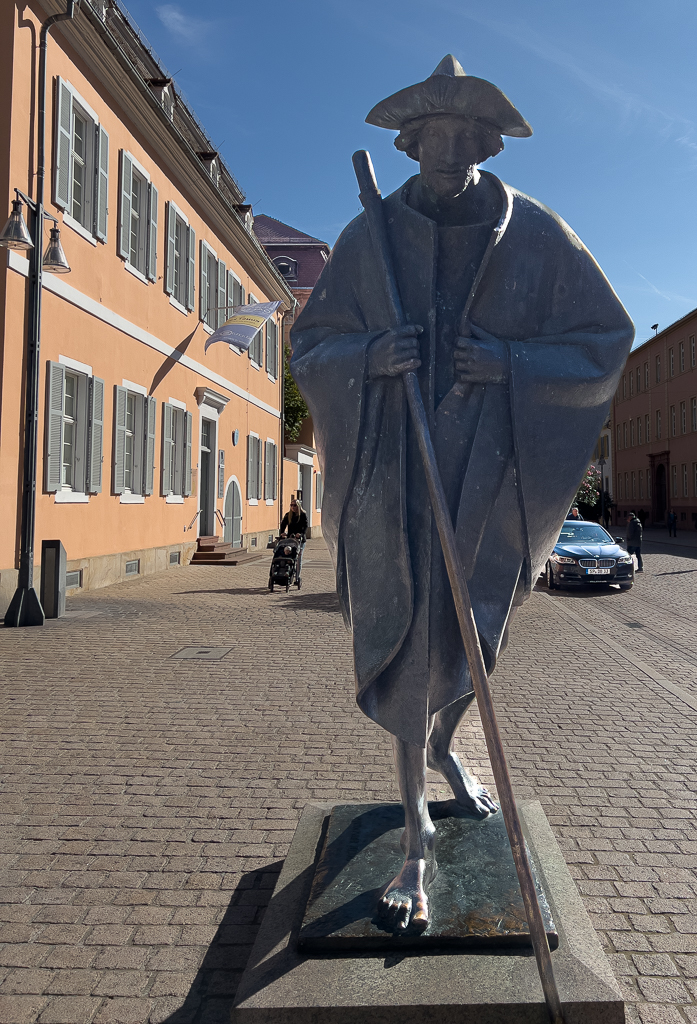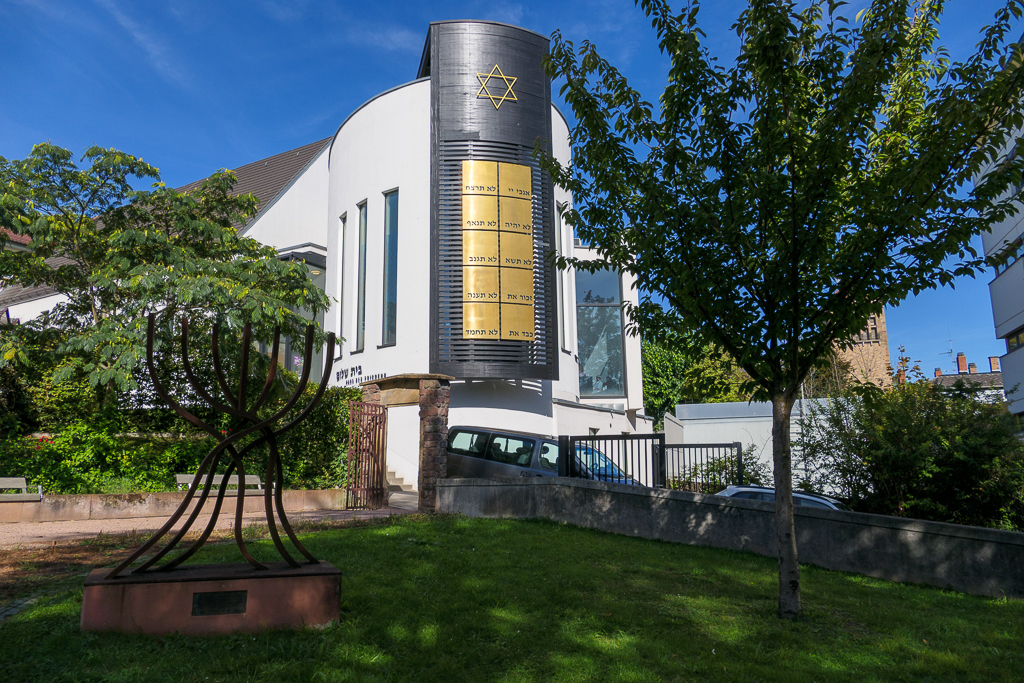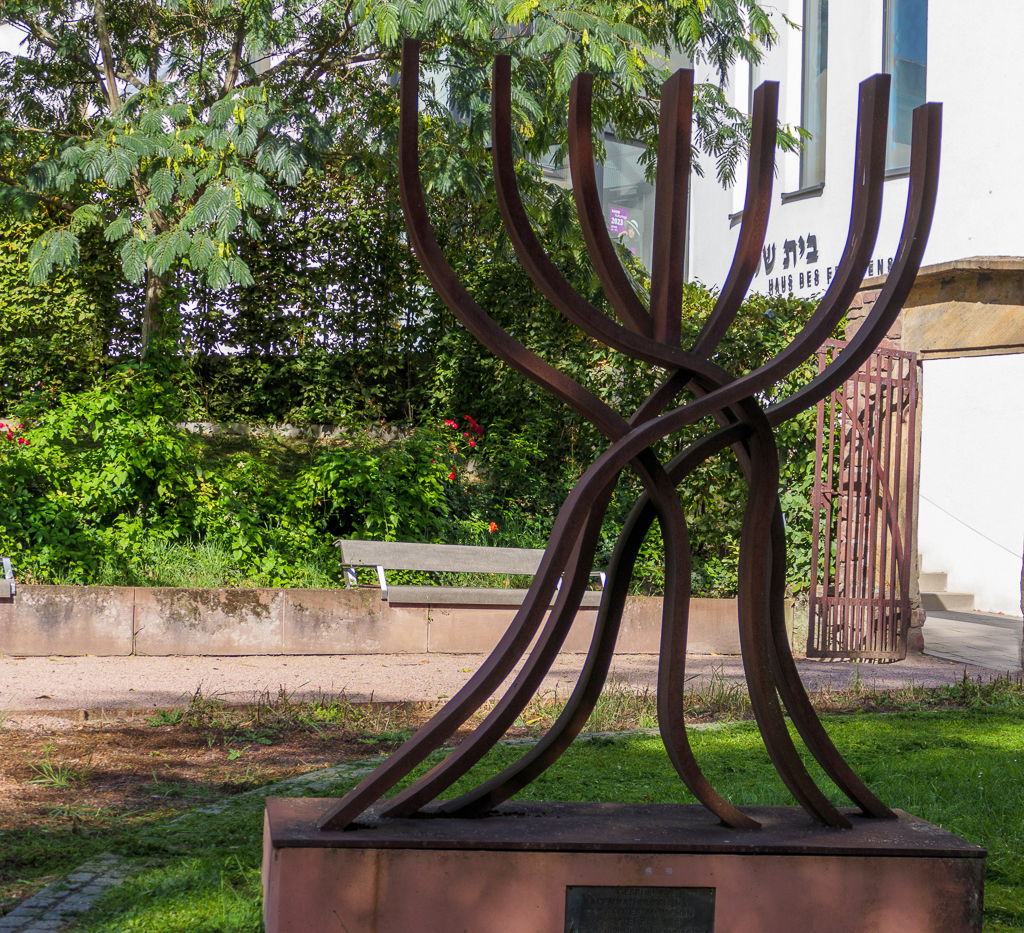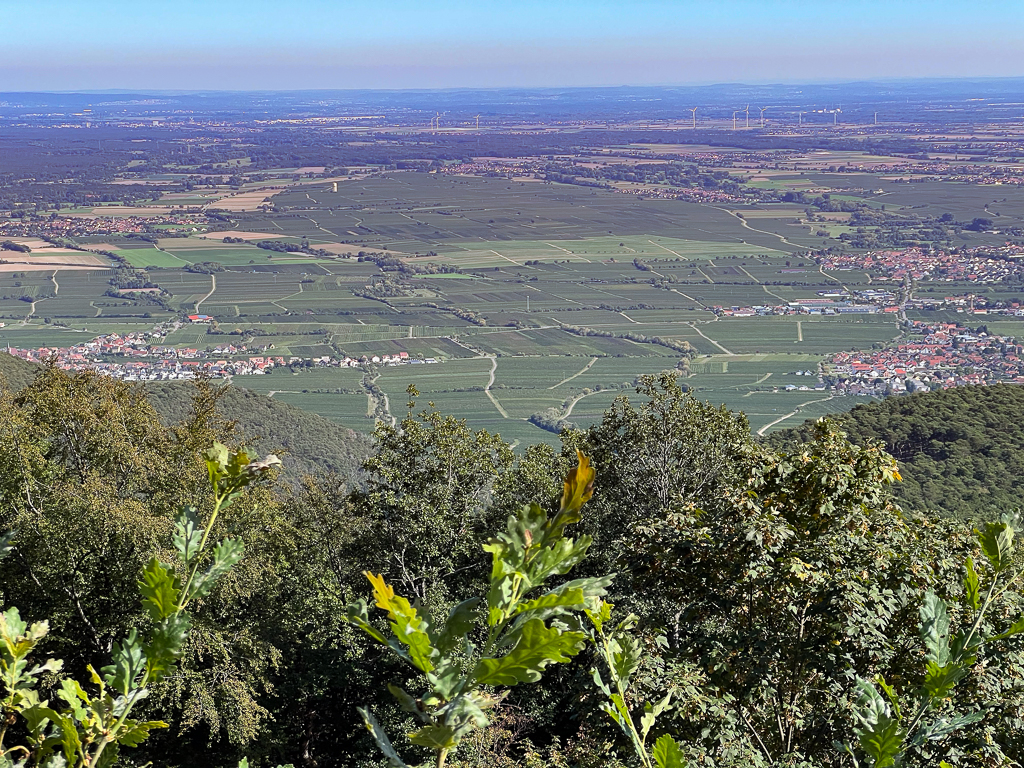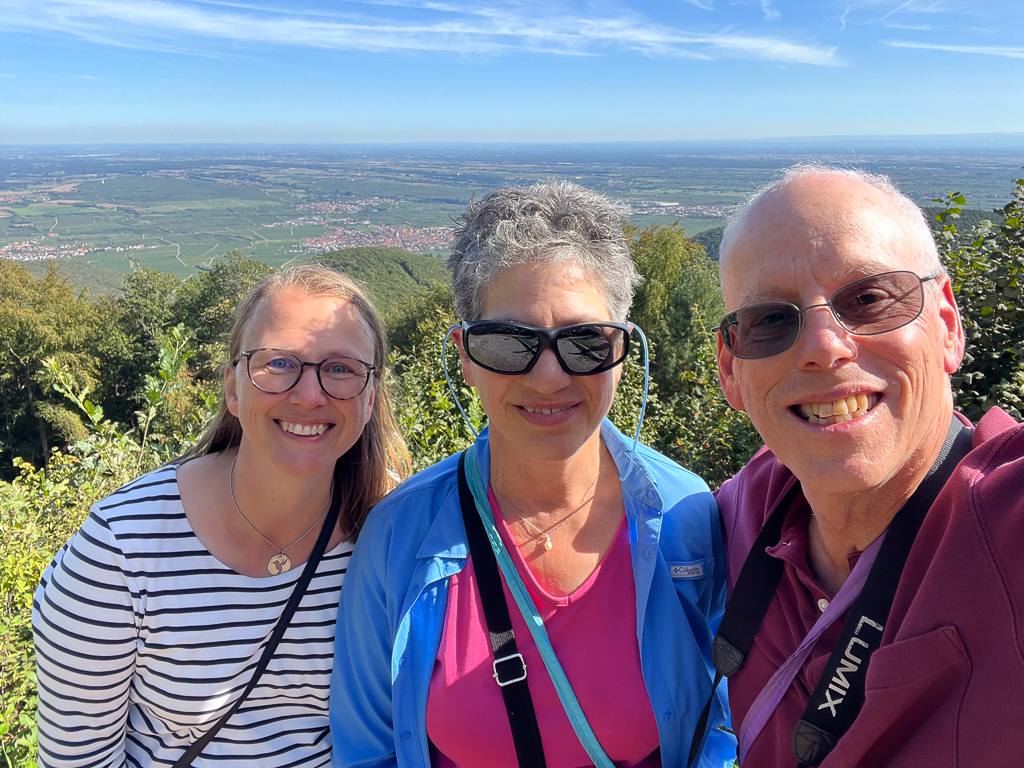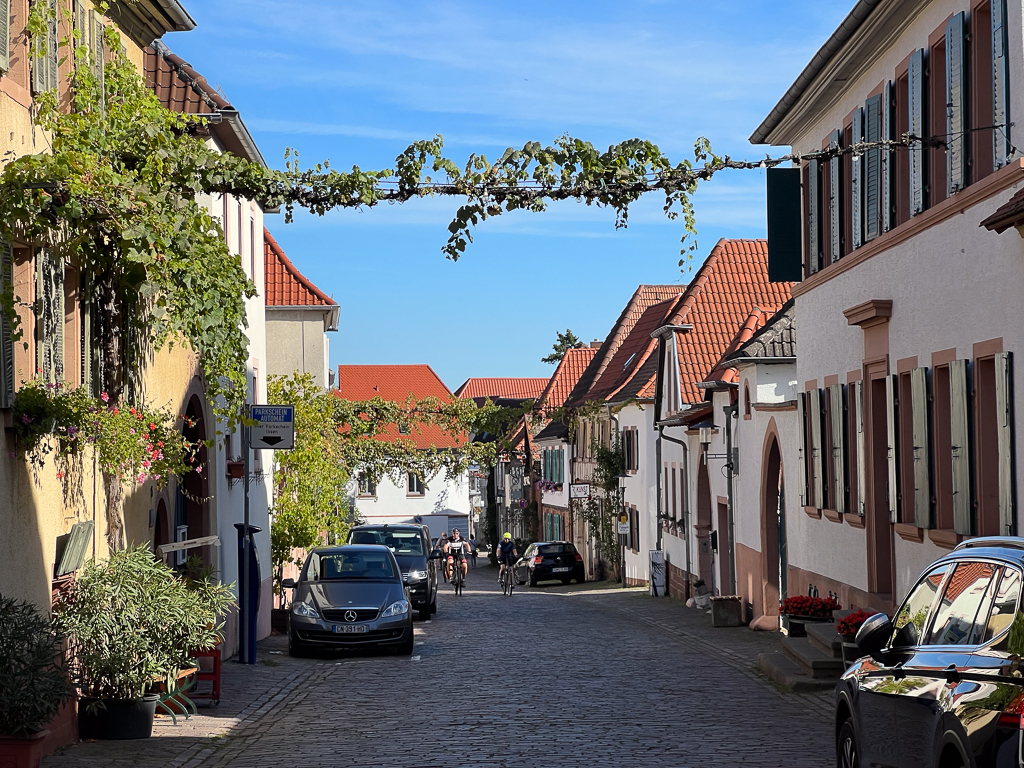We woke up this morning and found ourselves on the Main River, sailing towards our docking location in downtown Frankfurt. At breakfast, I caught a glimpse of Höscht Castle.

We docked a bit after 10 and were joined by Matthias Gemächlich, a history professor at the Johannes Gutenberg University in Mainz, who gave us a talk on “Jewish Life in Germany” from the 1st Century to today. He said that the first documented anti-Semitism happened in the 11th Century with the First Crusade; the 14th Century had some significant pogroms, too. In the 19th and early 20th Centuries, Jews in Germany finally were legally equal to other Germans; more than 100,000 Jews fought for Germany in WWI. Many German Jews were unwilling to leave Germany after Hitler’s rise…until it was too late.
After lunch, we took a quick stroll to the Städel Museum Garden to admire (or be puzzled by) the sculptures. The Garden currently hosts a temporary exhibition of Ugo Rondinone’s Sunrise. East., which occupies most of the back garden.
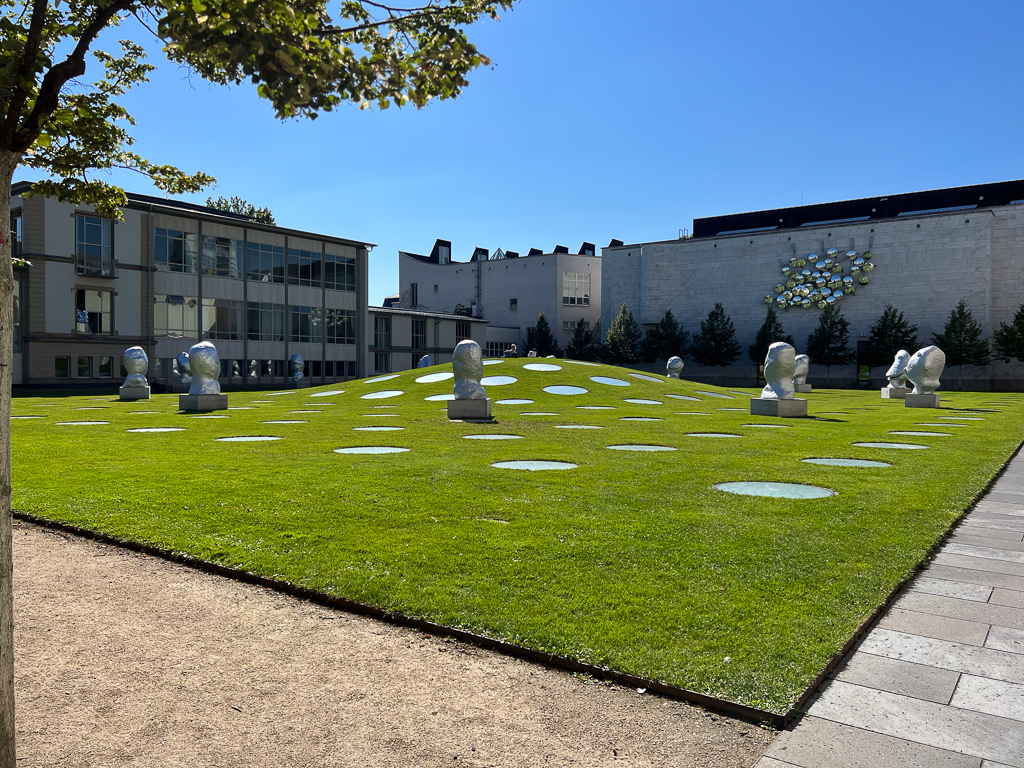
Some of the other sculptures were a bit more straightforward, like August Gaul’s The Donkey Rider or Tobias Rehberger’s Capri Moon.
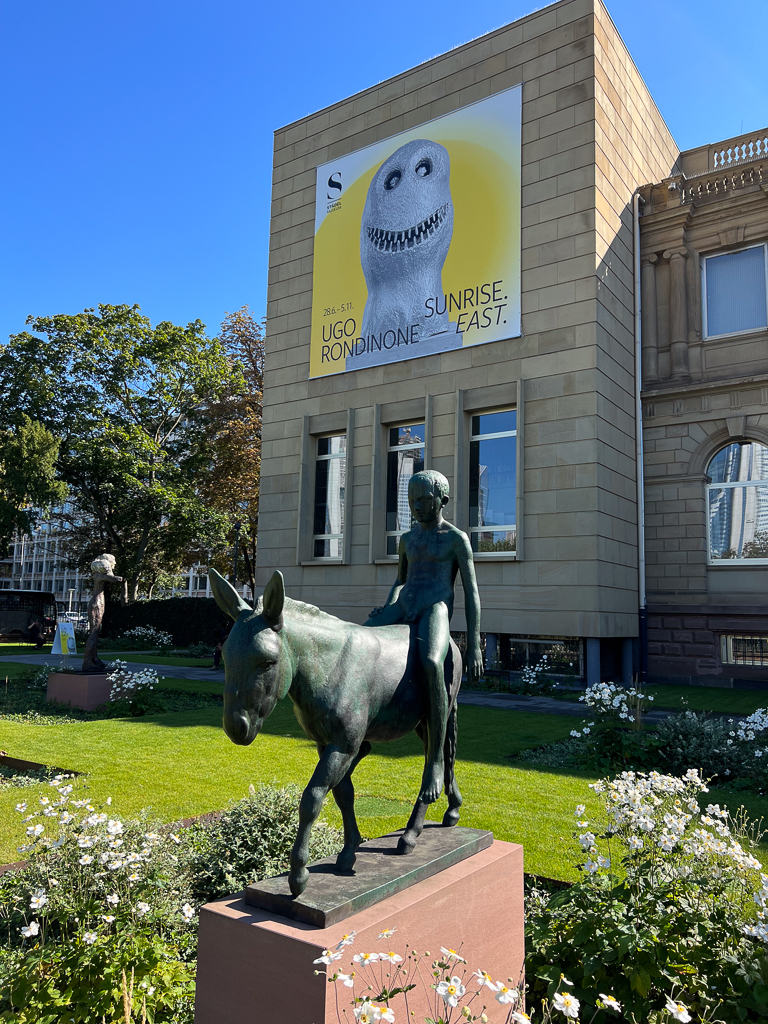
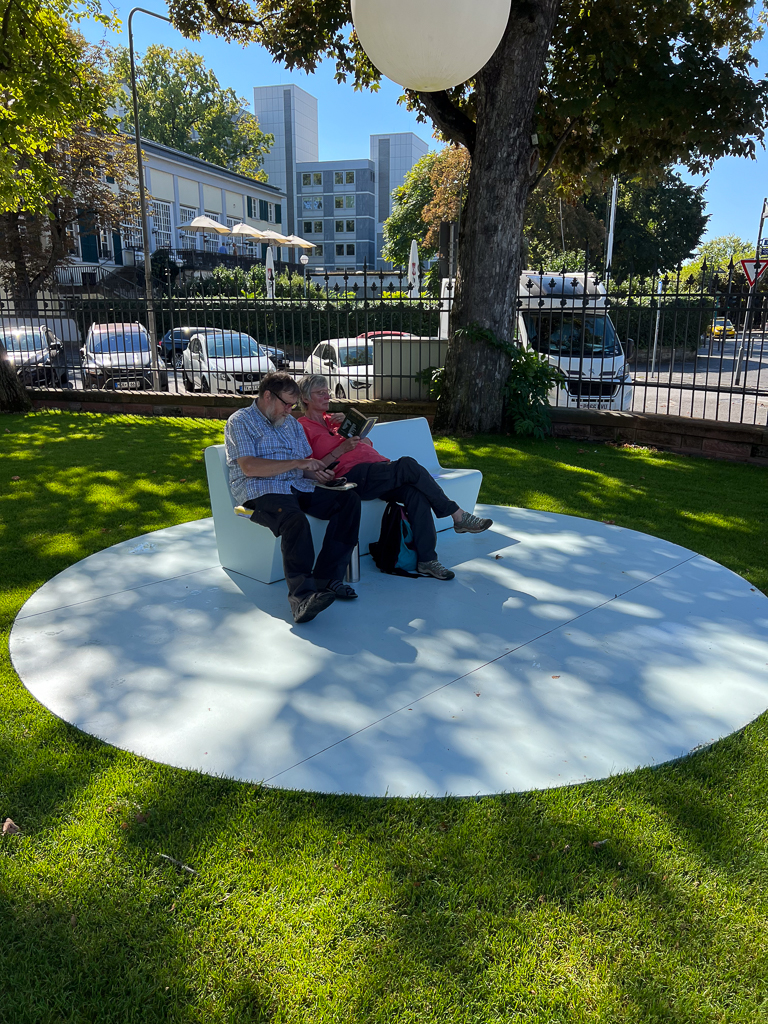
I especially enjoyed Olaf Nicolai’s Shutter’s Lullaby / Ellipse for Städel.
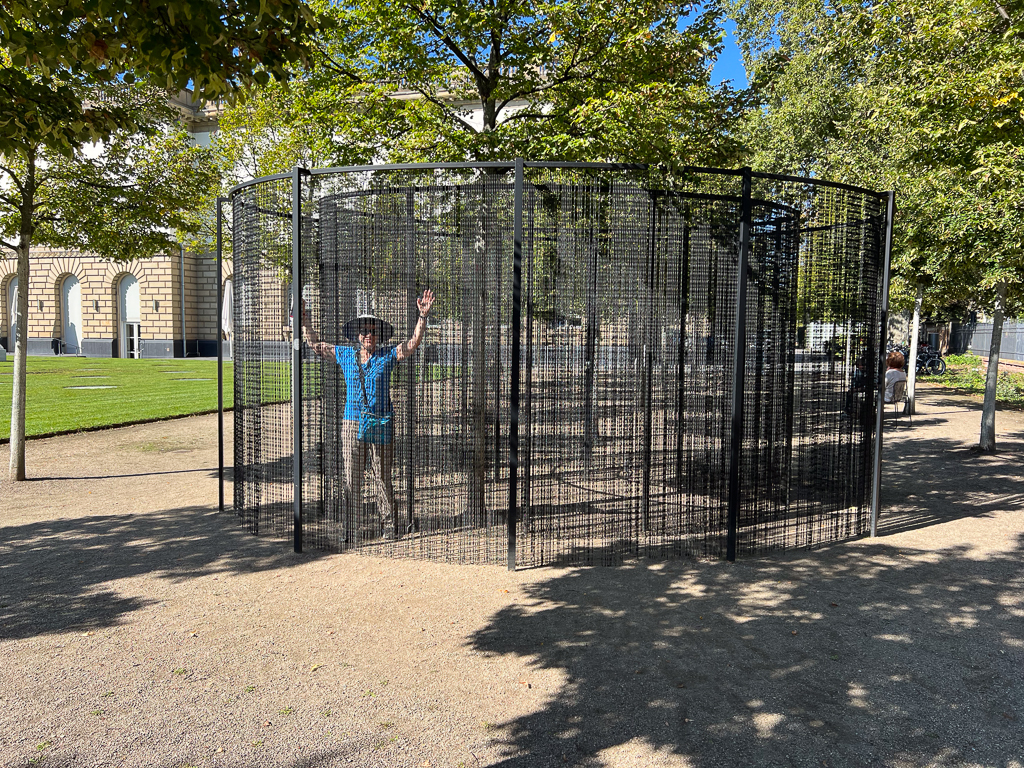
As we walked over the bridge to return to the ship, I was surprised by the Goodyear Blimp!
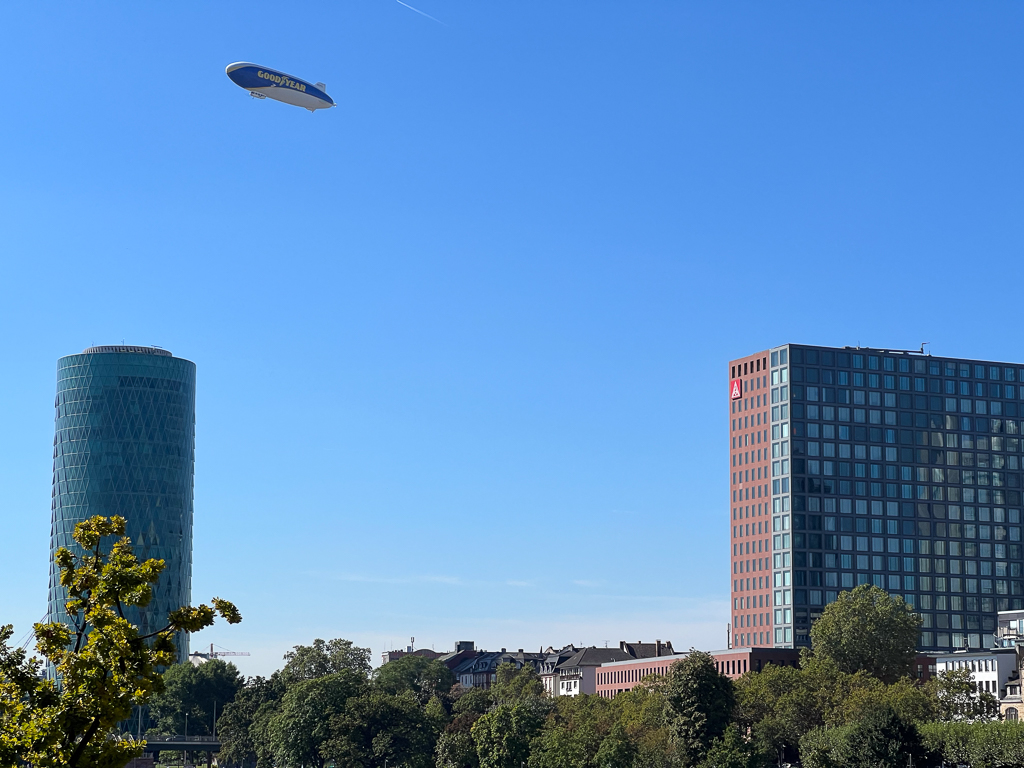
This afternoon, we took a tour at the Frankfurt Jewish Museum, a ten-minute walk from the ship. It incorporates two buildings – the Rothschild Palais and a modern extension.
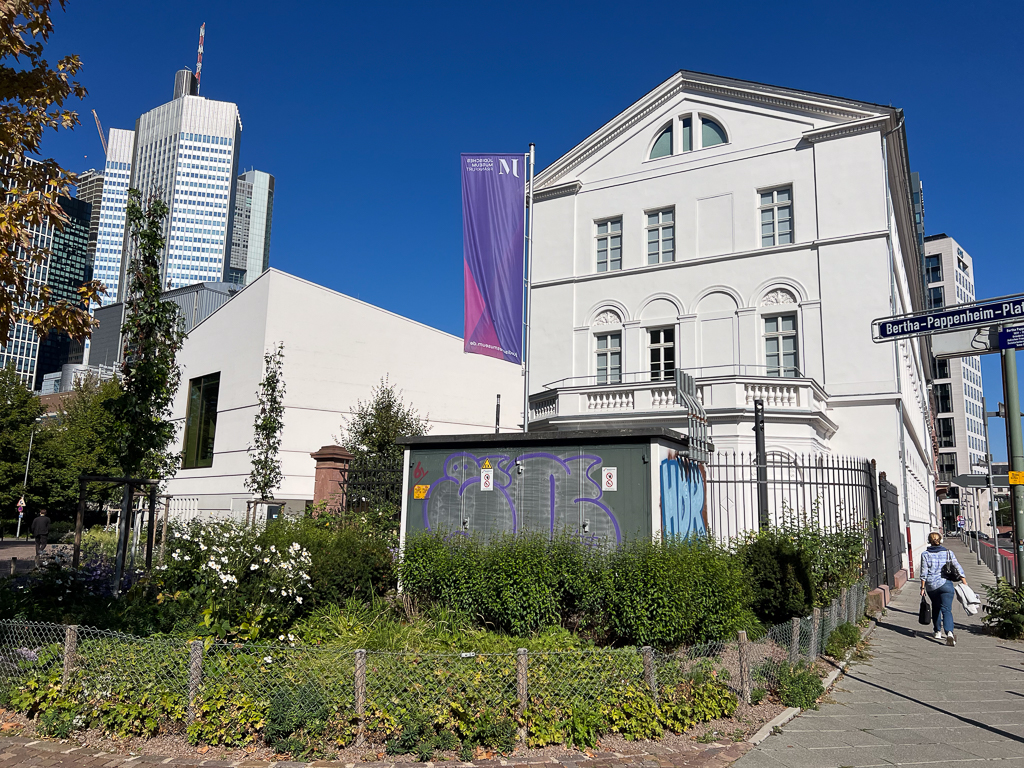
The sculpture in the courtyard sporting the two buildings was quite interesting; our guide, Alexandra, asked what we thought it represented and one of the other people on the tour immediately responded “Like the Torah, it’s a tree of life”. The sculptor, Ariel Schlesinger, chose not to title it to allow viewers to react organically.
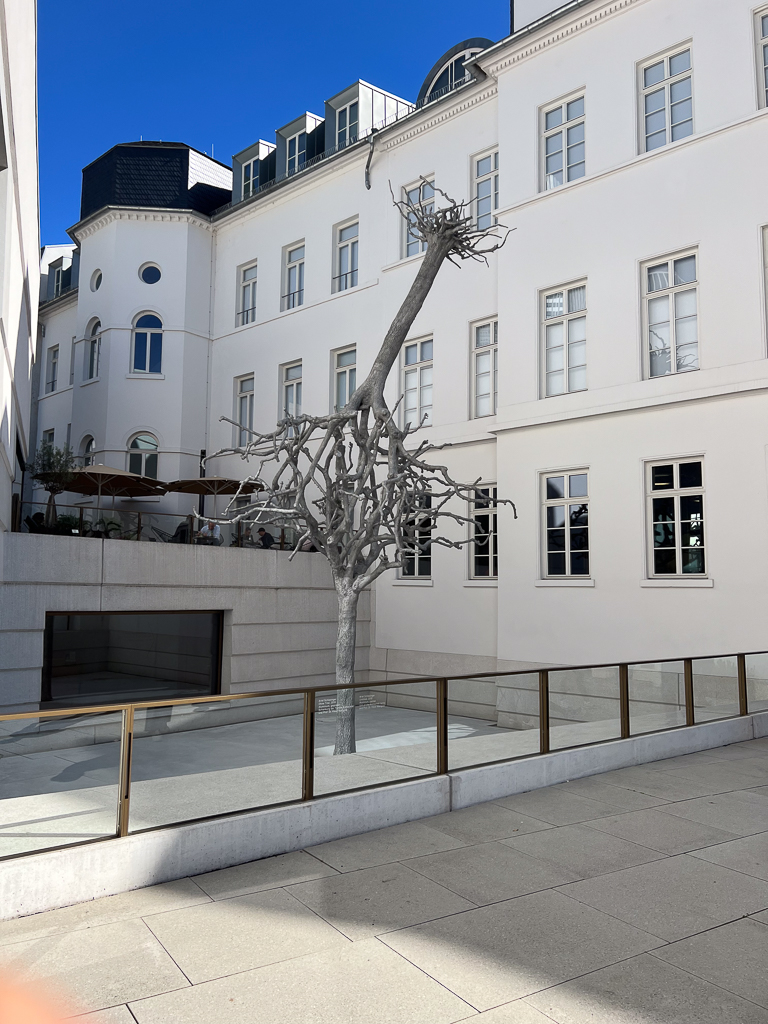
Unlike many others, this museum isn’t heavy on “Judaism 101” and exhibiting ritual objects and books; instead, it’s focused on the Frankfurt Jewish experience from the enlightenment to today. One exhibit presented the history of three Frankfurt families: the famous Rothschild banking family, the middle-class merchant family Frank (you may know of their daughter Anne), and the Eastern European family of the well-known author and communist Valentin Senger.
Although the exhibition doesn’t focus on ritual objects, I thought this Torah Shield was interesting – it has “Jewish” elements (the palm leaves) and “German” elements (the oak leaves), illustrating that Frankfurt Jews in the late 19th Century thought of themselves as Jews whose permanent home was Germany, not as temporary residents until they could return to the Land of Israel.
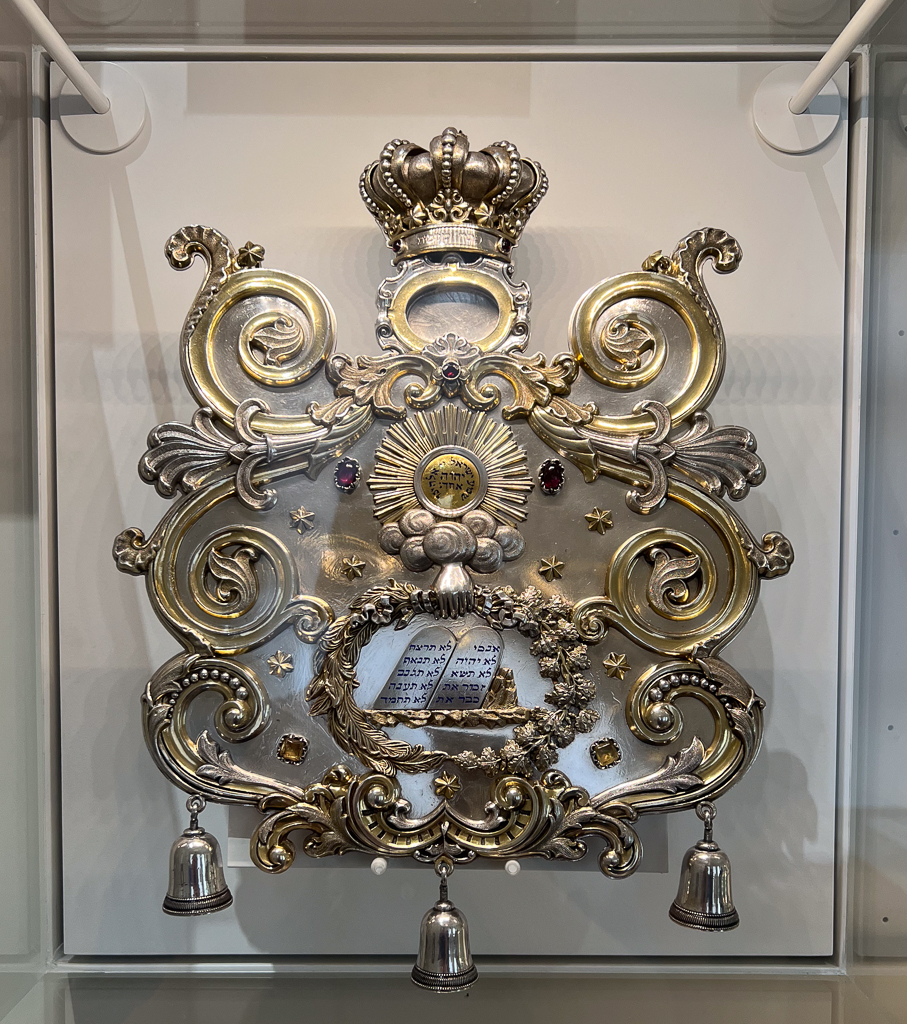
I discovered that Germans don’t refer to “Kristalnacht” – they call it “Pogrom Night” or the “November Pogrom”, because it wasn’t just one night, and much more than glass was broken – four of the five synagogues in Frankfurt were destroyed, and hundreds were killed. And that, of course, was only the beginning.
It was an interesting and sobering day.
